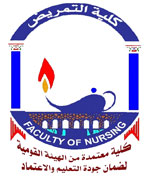ABSTRACT
Pediculus humanus capitis is a worldwide public health concern that affects mostly primary school age children. Objective: the aim of present study was conduct a screening to determine the prevalence of head lice infestation in primary school children, and to identify knowledge and associated risk factors of head lice infestation among primary school students in Assiut City. Methods: A descriptive study design was performed in 4 randomly selected public schools; the sample size of the study was 1335 pupils in 4 primary schools in Assiut city who were selected by multistage, systematic random sampling. Results: The mean age of students was 8.9+1.9 year and age group ranged between 6-13 years. Almost two thirds of the students were infested. There were significant relationship between head lice infestation and age, sex, hair length, and risk factors behaviors. There were no significant relationship between head lice infestation and mother' education or job. Also, the majority of students have correct knowledge about head lice infestation, treatment and prevention; however they can't control the risky behaviors. The risky behaviors included: sharing beds and towels, head covers, combs and head to head contact. Conclusion: A high rate of head lice infestation was demonstrated among almost two thirds of the students. The results indicated that female gender, long hair, young age-group 6<9 years old, positive history of previous infestation, sharing of beds and combs, and family overcrowding were the main risk factors for the head lice infestation. Recommendation: There is a need for continuous health education program for increasing improving the healthy behaviors and raising the awareness of students, parents, teachers and nurses about nit free school environment to prevent head lice infestation.
© 2015 AENSI Publisher All rights reserved.

